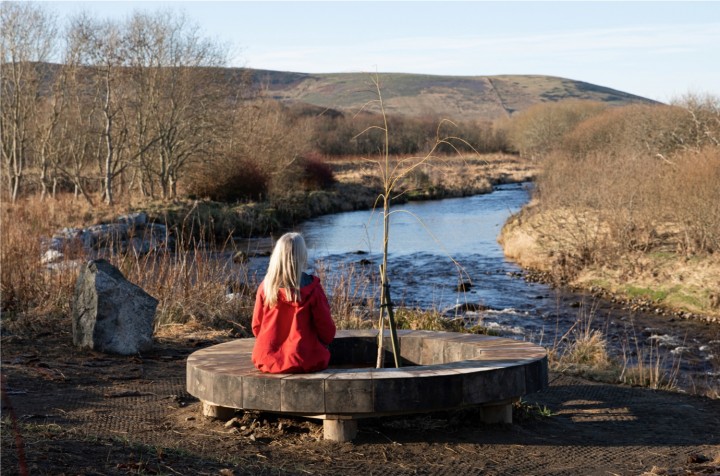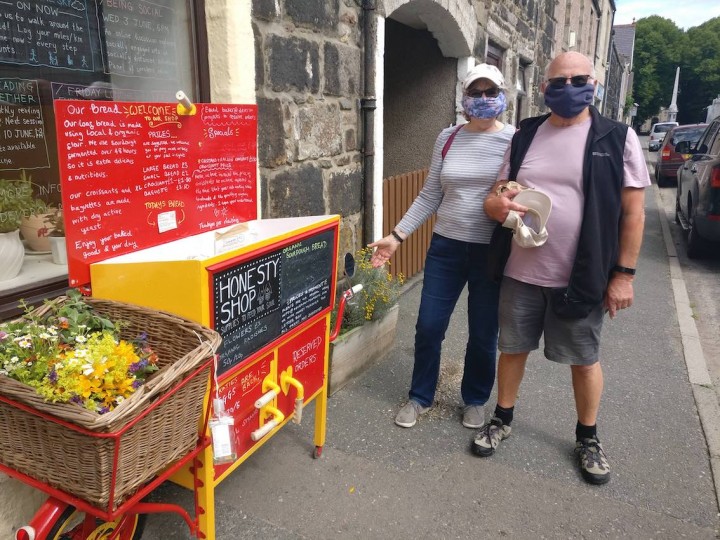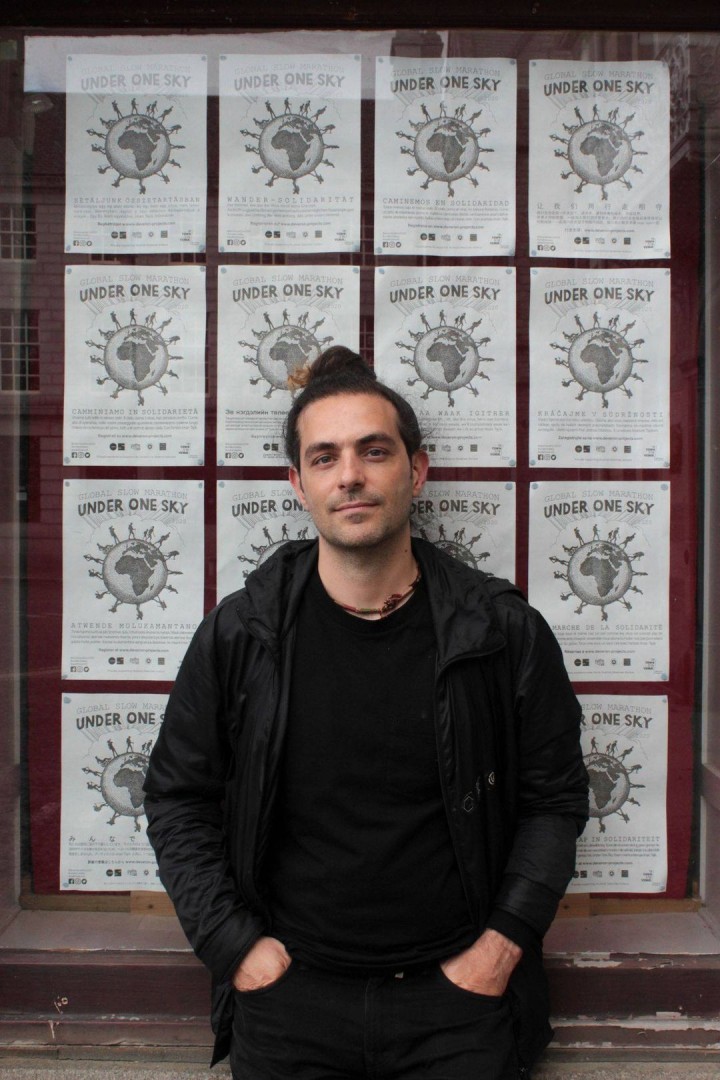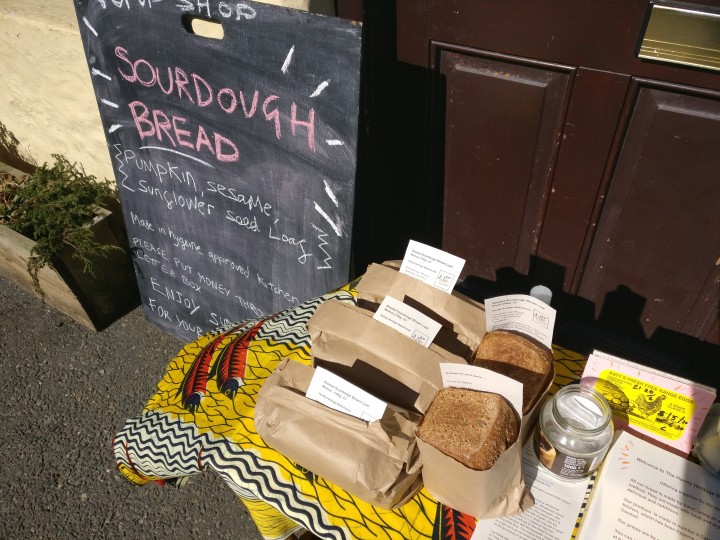Scottish Art News
Latest news
Magazine
News & Press
Publications
Room to Roam
By Neil Cooper, 19.01.2021

From little acorns do mighty oaks grow. So it is with Deveron Projects, the Aberdeenshire based arts initiative, which over the last quarter of a century has operated in the small town of Huntly as a holistic body that puts a sense of place at its core. Co-founded by dynamic German émigré Claudia Zeiske in 1995 as Deveron Arts, over the following twenty-five years, the freethinking organisation has hosted more than 100 artists’ residencies that have focussed on the relationship between the local and the global. Major figures taking part have included Christine Borland, Peter Liversidge, Dalziel + Scullion and Jacqueline Donachie.
Each temporary resident has also left some kind of totemic legacy behind to create what has become The Town Collection. Rather than have these original and sometimes-intangible creations bound either by the stuffiness of a museum or the chi-chi confines of a white cube gallery, they occupy shops, pubs, schools and other spaces where everyday interaction is more likely. As residencies increasingly moved beyond creating product, somewhere along the way, the phrase, ‘The Town is the Venue’ was introduced. This was more than a handy promotional blurb, but, in a town with a population of 4,400 living in what seems like an endless economic downturn, a summation of the entire Deveron Projects ethos.
In this sense, recent initiatives have included Slow Marathon (2012-ongoing), a now annual 26-mile artist-led walk instigated by Ethiopian artist Mihret Kebede. Oaks & Amity / The White Wood (2014-15) is a living monument to peace instigated by French artist Caroline Wendling. Working alongside 150 members of the Huntly community, Wendling planted forty-nine oaks using acorns from Joseph Beuys’ 7000 Oaks in Kassel, alongside 700 native trees and 1000 other wild flowers in a project that will blossom over the next 300 years. Weeping Willow Tree (2019-2020) was similarly developed by German artist Clemens Wilhelm to mark the UK’s departure from the EU as a symbol of both sadness and healing.
With Deveron Projects already on the map, arguably the most significant development of all in terms of legacy came in 2008 by way of Room to Roam, a new brand for the town initiated by South African artist Jacques Coetzer in association with Huntly Development Trust, untly Development Association. This new slogan for the town subverted standard branding by looking to Huntly born Victorian poet and fantasy writer George MacDonald’s words from his books, ‘Lilith’ (1895) and ‘Phantastes’ (1858) that gifted The Waterboys the title of their 1990 album, ‘Room to Roam’. With Waterboys driving force Mike Scott coming on board, the album’s title song was rehearsed with local musicians, and is now the town anthem.
 Honesty Shop. Courtesy of Deveron Projects.
Honesty Shop. Courtesy of Deveron Projects.
As Zeiske steps down from the role she created and passes the baton to incoming director Natalie Palombo, Deveron Projects has arguably become the ultimate public art project. This makes for a bittersweet departure for Zeiske.
“It is certainly with mixed feelings,” she says. “I’ve planned this for over a year now, and I basically decided that after twenty-five years, it is probably a good time to stop and think about other things. I’ll miss working with the artists, but I’ll find other ways of doing that, and I’m looking forward to having more time, and not always being on the computer.”
Zeiske co-founded Deveron Projects with friends after moving to Huntly with her husband due to his job.
“I had no art background,’ she says. “I was an anthropologist by trade, and came from a human rights background. There was touring theatre and music here, which was fine, but I met some people, and we decided to do something ourselves. I didn’t know what socially engaged art was at the time, but as an anthropologist, it interested me. The idea of the town as the venue took about eight years, so things evolved organically. I always say the world needs more artists, not more art.”
The initial plan had been to set up an arts centre, but when Zeiske and co had their funding application turned down, it was a blessing in disguise.
“I’ve seen a lot of arts centres close down,” she says. “Having the town as the venue allows you to be more flexible than in a white space arts centre. If you have a gallery, you are under constant pressure to programme, whereas we can say we might want to do something in August, and programme as ideas and people become available. It all starts with the community, then you find an artist, and then find a venue. If you need one.”
Zeiske will be staying in Huntly once she’s stepped down, with the next few months a transitionary period as Palombo eases her way in to her post. Zeiske will also be concentrating on writing a follow-up to 'ARTocracy in the Making', her book co-written with current director of the Aberdeen based Peacock Visual Arts, Nuno Sacramento. Published in 2010 and now out of print, Zeiske and Sacramento’s book is a how-to guide to doing things the Deveron Projects way.
“The first book was a history of how to do it,” Zeiske says. “Now I want to write about why to do it, and look at environment, health, poverty, and how they inter-relate with art.”
Zeiske’s departure from Deveron Projects comes following its inclusion in the Calouste Gulbenkian Foundation’s recently announced shortlist of ten civic organisations in the running for a new award designed to spotlight the vital and often unsung role such bodies play in society.
This has been particularly evident during the COVID-19 pandemic, which has curtailed activities on a mass scale throughout 2020 and beyond. Despite this, many grassroots based arts initiatives such as Deveron Projects have remained at the vanguard of work within local communities during lockdowns.
Selected from 260 entries, Deveron Projects was chosen following its work during the first lockdown. This saw a rethink of its Artist in Residence policy, which led to an honesty shop and a Baker in Residence. Out of this grew the idea for ‘Slow Marathon: Under One Sky’, in which Glasgow based Iranian artist Iman Tajik reimagined Deveron’s annual walk with a worldwide community of walkers sharing their lockdown constitutionals. As they collectively circumnavigated the globe, they created a collage of 1,500 photographs of the sky en route.
 Iman Tajik. Courtesy of Deveron Projects.
Iman Tajik. Courtesy of Deveron Projects.
With the announcement coming shortly after Deveron Projects’ silver jubilee celebrations in December 2020, the Calouste Gulbenkian shortlisting came as a belated but welcome anniversary present. As Zeiske steps down and Palombo moves in, it might also be regarded as both a parting and welcoming gift to an organisation about to embark on the next stage of its evolution.
“It’s a very interesting time to be starting a new job,” says Palombo, “but it’s really exciting as well.”
Palombo is talking while in the midst of upping sticks to Huntly after herself stepping down from Many Studios, the community based organisation she co-founded in Glasgow a decade ago, and which combines a studio complex with developing projects both locally and internationally. Palombo is also stepping down as curator of The Gallow Gate project space.
“It’s bittersweet,” she says of her departure. “Both organisations are in a period of transition, and this will be an entire change for me.”
Palombo first visited Huntly after seeking out Zeiske for advice on one of her own projects. In this sense, even her appointment has been an organic process.
“It felt too much of an opportunity to miss,” she says. “Deveron Projects is the only other organisation I can imagine having the same sort of autonomy as what I’ve come from. I applied basically because it was Deveron Projects.”
Palombo joins Deveron Projects just as it begins a major development following the acquisition of a building in Huntly town square, with plans for it to be developed into a community resource. While on the face of it such a move appears to go against everything Deveron Projects is supposed to represent, it is unlikely to become a conventional arts centre.
“It’s a really interesting moment, says Palombo. “The ethos of Deveron Projects won’t change, but it will be interesting to see how the building is used in the programme. It’s interesting to see how the town is changing, and how it’s been affected by the pandemic, and having something like a heritage baker during that time has been a response to that.
“One of the things both Claudia and I are really keen on is having a balance between the global and the local, and bringing the local closer to the organisation.”
 Honesty Shop. Courtesy of Deveron Projects.
Honesty Shop. Courtesy of Deveron Projects.
Perhaps it is the times we’re living in right now, but socially engaged art that exists in the everyday rather than in a gallery is much more visible than it was when Deveron Projects began. Once upon a time, the sort of work fostered by Deveron Projects might have been patronisingly shunted off to the sidelines and filed under ‘community art’, while the A-list shows at so-called centres of excellence got all the headlines. These days, collectives, activist art and non-gallery based work have acquired a legitimacy barely recognised previously by those who prefer buzzwords and cultural strategies to fostering grassroots autonomy.
The holistic, non-gallery based roots of Deveron Projects can be traced back as well to the nineteenth and early twentieth century presence of Aberdeenshire born environmentalist and town planner Patrick Geddes. One can also recognise elements of the Deveron Arts ethos in Nan Shepherd’s book, ‘The Living Mountain’, written in the 1940s, but not published until 1977. It’s there too in the environmental actions and ‘social sculpture’ of Joseph Beuys.
The influence of Beuys on graduates of David Harding’s Environmental Art course at Glasgow School of Art since the mid 1980s is plain to see in their successes. A kindred spirit too is Bill Drummond, the Newton Stewart sired co-founder of The K-Foundation, whose adventures around the world building beds, making soup and baking cakes were documented in Paul Duane’s 2019 film, ‘Best Before Death’. Deveron Projects’ place in Huntly, however, remains unique.
“I think what we’ve been spearheading is the notion of place in socially engaged art, “ says Zeiske. “What you don’t find elsewhere is projects engaged with one place. The only other one I can find is Grizedale,” she says of the Lake District based commissioning and residential centre situated in Grizedale Forest. “Outside of Britain, I’ve been looking and looking, but so far at least, I can’t find any organisation that is loyal to one place in the way Deveron Projects is with Huntly.”
After twenty-five years leading the way, Deveron Projects looks set to continue to walk towards the future.
“You have to understand,” Zeiske says. “I didn’t originally come here by choice. I’d lived in Munich, Berlin, London and Amsterdam, all these cities. Coming to Huntly, where there are only 4,000 people, I was able to do things I wouldn’t be able to do in a city, and to make it into a place where there’s room to roam.”
For more information visit Deveron Projects.






